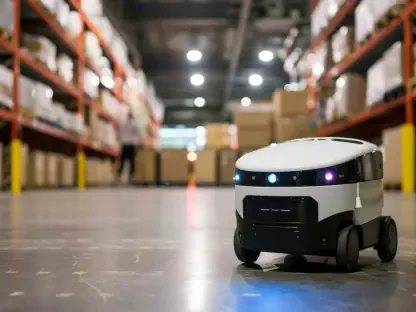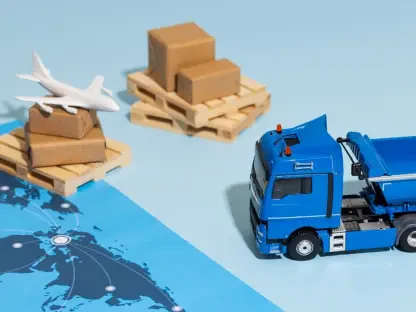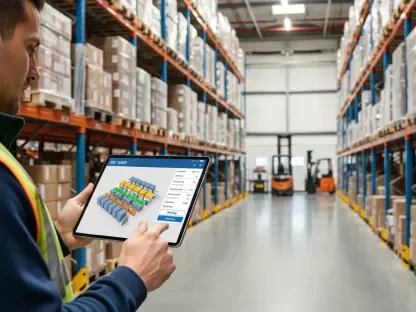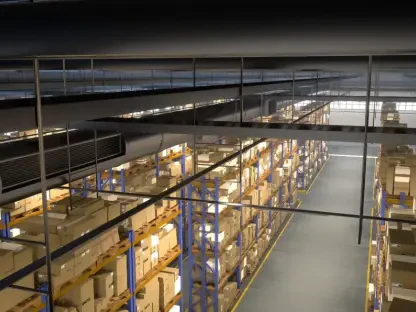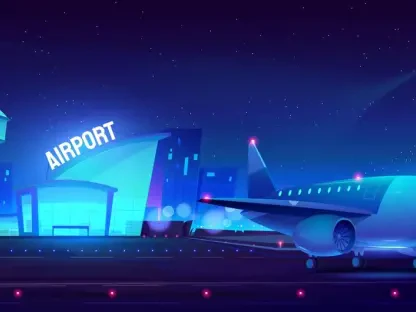Imagine a world where every package arrives exactly when expected, with full transparency for both the customer and the logistics provider, all while minimizing environmental impact through innovative technology. In today’s fast-paced e-commerce landscape, this vision is becoming a reality, driven by platforms that tackle the complexities of first and last-mile delivery. One such solution stands out for its ability to transform logistics operations through cutting-edge technology. This review dives into a leading SaaS-based, AI-powered platform designed to optimize delivery processes, exploring its features, real-world impact, and potential to redefine industry standards.
Core Functionalities Driving Efficiency
Real-Time Visibility for Seamless Tracking
At the heart of this logistics platform lies its ability to provide end-to-end visibility across delivery operations. Stakeholders gain access to live updates on shipment status, vehicle locations, and estimated times of arrival, reducing uncertainty at every stage. This transparency not only builds trust with customers but also empowers logistics providers to make informed decisions swiftly.
Beyond basic tracking, the system integrates data from multiple touchpoints to ensure accuracy. This means fewer missed deliveries and quicker resolution of issues, as discrepancies can be spotted and addressed in real time. For businesses, this translates to improved reliability and stronger customer loyalty.
AI-Powered Route Optimization
Another standout feature is the dynamic route optimization powered by artificial intelligence. The platform analyzes real-time variables such as traffic patterns, weather conditions, and delivery urgency to chart the most efficient paths. This adaptability minimizes delays and cuts down on fuel consumption significantly.
The impact on operational efficiency cannot be overstated. By reducing idle time and unnecessary mileage, companies save on costs while meeting tight delivery windows. This feature proves especially valuable in urban environments where congestion often disrupts schedules.
Automated Orchestration of Delivery Workflows
Automation plays a pivotal role in streamlining delivery coordination from dispatch to final handover. The technology manages both in-house and subcontracted fleets, ensuring smooth workflows without manual intervention. Tasks like assigning drivers, scheduling pickups, and confirming drop-offs are handled seamlessly.
This automation reduces human error, which often leads to failed deliveries or miscommunications. With centralized control, logistics providers can scale operations without sacrificing precision, making the platform a vital tool for growing businesses.
Enhancing Customer Experience
Customer-centric tools elevate the platform beyond mere operational utility. Features such as branded notifications, easy return processes, and integrated digital payments prioritize convenience and trust. Consumers stay informed with personalized updates, fostering a positive interaction with the brand.
Additionally, integrations like locker systems for secure drop-offs and cash-on-delivery payment gateways cater to diverse market needs. These elements collectively ensure that the end-user experience aligns with modern expectations of speed and accessibility.
Industry Context and Competitive Edge
The logistics sector is undergoing a profound shift, with technology becoming indispensable to meet rising customer demands for rapid, predictable deliveries. Balancing cost efficiency and sustainability adds another layer of complexity, pushing companies to adopt agile, data-driven solutions. This platform positions itself as a leader in addressing these challenges, particularly in the intricate realm of parcel delivery across varied regions.
Its ability to unify fragmented processes sets it apart from traditional systems. By offering a scalable, tech-forward approach, it caters to businesses of all sizes, from local providers to multinational corporations, ensuring they remain competitive in a crowded market.
A key trend shaping its relevance is the growing emphasis on eco-conscious practices. The platform’s focus on optimizing resources and reducing emissions aligns with global priorities, making it a preferred choice for companies aiming to modernize while minimizing their carbon footprint.
Real-World Impact Through Strategic Alliances
A notable example of the platform’s effectiveness is its partnership with a leading logistics provider in Southeast Europe, operating across nine countries including Croatia, Slovenia, and Serbia. This collaboration focuses on digitizing first and last-mile delivery, replacing outdated manual systems with advanced digital tools. The result is a marked improvement in transparency and a reduction in failed deliveries.
Specific outcomes highlight the platform’s versatility, such as integration with locker systems for contactless pickups and digital payment options tailored to regional preferences. These innovations have directly enhanced customer satisfaction by offering greater flexibility and control over delivery options.
Operationally, the alliance has tackled inefficiencies like inaccurate delivery estimates and high fuel usage. By centralizing control and enabling real-time adjustments, the partnership demonstrates how technology can bridge gaps in distributed geographies, setting a benchmark for others in the region.
Challenges in Adoption and Scalability
Despite its strengths, implementing such a comprehensive platform is not without hurdles. Transitioning from legacy systems often poses significant resistance, as manual processes are deeply ingrained in many organizations. This shift requires extensive training and change management to ensure smooth adoption.
Fragmented visibility across supply chains remains a persistent issue, particularly in markets with diverse operational standards. While the platform addresses this through unified data integration, achieving consistency across borders can be slow, impacted by regulatory variations and infrastructure limitations.
Scaling to new regions also brings challenges related to customization. Adapting the technology to local needs, such as unique payment systems or compliance requirements, demands ongoing refinement. These obstacles, while surmountable, underscore the complexity of global expansion.
Looking Ahead: Innovation and Sustainability
The future trajectory of this logistics solution appears promising, with potential advancements in artificial intelligence and machine learning poised to enhance predictive accuracy. Features like anticipating delivery bottlenecks before they occur could further elevate operational precision over the coming years, from now through 2027.
Sustainability remains a core focus, with ongoing efforts to integrate features that lower environmental impact. Innovations aimed at optimizing energy use and supporting electric vehicle fleets could position the platform as a leader in green logistics, especially in emerging markets hungry for efficient solutions.
Expansion into untapped regions also holds significant potential. By addressing unique logistical challenges in these areas, the platform can play a transformative role in shaping a more connected and eco-friendly delivery ecosystem worldwide.
Final Thoughts and Next Steps
Reflecting on the evaluation, the journey of this logistics platform showcased its capacity to revolutionize delivery operations through robust features and strategic collaborations. Its impact on enhancing transparency and efficiency left a strong impression, particularly in real-world applications across Southeast Europe.
Moving forward, stakeholders should prioritize integrating such technology with a focus on tailored training programs to ease the transition from manual systems. Exploring further partnerships to test and refine sustainability features could also accelerate industry-wide adoption.
Ultimately, the path ahead lies in leveraging these advancements to address scalability challenges, ensuring that logistics providers of all sizes can harness the benefits. This platform paved the way for a tech-driven, customer-focused era in delivery, and continued innovation will be key to sustaining that momentum.


